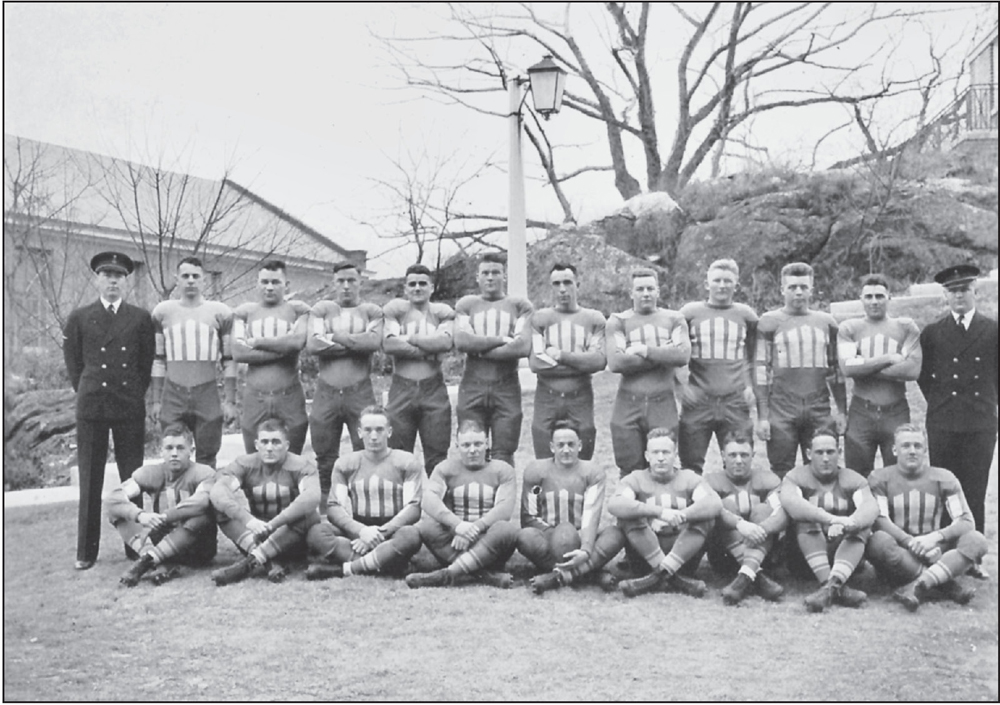
THE 1933 FOOTBALL TEAM. This sport has been played by Coast Guard cadets since 1922, starting at Fort Trumbull. This would have been the second team to play at the new academy. Billard Hall is visible in the background. (1934 Tide Rips.)
Six
PLAY
All work and no play make Jack a dull boy (or girl). They also make him (or her) out of shape. US Coast Guard Academy cadets are required to maintain a high standard of physical fitness. They are members of a military service. An enjoyable means of keeping fit is through regular participation in physical sports. An additional benefit of sports is building team spirit and fostering leadership. Despite the academy’s relatively small size, which totals approximately 1,000 cadets, it has a surprising number of both male and female sports teams. In contrasting then and now, the scope of the athletic portion of the academy experience is perhaps the most different.
In 1932, the academy’s first year at its present location, the Tide Rips yearbook listed only 5 sports: football, basketball, fencing, sailing, and boxing. Twenty years later, in 1952, there were 10 sports: football, basketball, swimming, wrestling, cross-country, track, baseball, rifle, pistol, and sailing. In 1963, there were 14 sports: football (that year’s team became the first undefeated, untied academy team), soccer, cross-country, basketball, swimming, wrestling, pistol, rifle, hockey (which was dropped as a league sport after 1963), baseball, track, tennis, dinghies, and yachts.
In 2019, there were a total of 22 intercollegiate sports at the academy: baseball, men’s basketball, women’s basketball, men’s crew, women’s crew (ranked 12th nationally), men’s cross-country (ranked 10th in New England), women’s cross-country, dinghy sailing, football (ranked 2nd in the New England Men’s and Women’s Athletic Conference, or NEWMAC), men’s indoor track, women’s indoor track (Kaitlyn Mooney was the 5,000-meter national champion), men’s lacrosse (NEWMAC champion), women’s lacrosse, women’s outdoor track, men’s outdoor track, pistol, rifle, offshore sailing, men’s soccer, women’s soccer, softball, and women’s volleyball.
In addition, the academy offers club sports: hockey, men’s rugby, women’s rugby, and triathlon. The alumni association financially supports these club sports. Adding to this impressive list are the following clubs: aviation, Cadets Against Sexual Assault (CASA), Sandhurst, dance, and water polo. Finally, there are the cultural councils: the Asian, Pacific, American Council; the Compañeros Club; the Genesis Club; the International Council Club; Spectrum (LGBTQ); and the Women’s Leadership Initiative.
The academy’s musical programs are an equally important component of cadet leisure activities. These include concert band, pep band, regimental band, Nite-Caps, Glee Club, Fair Winds, Idlers, and Windjammers.

THE 1933 FOOTBALL TEAM. This sport has been played by Coast Guard cadets since 1922, starting at Fort Trumbull. This would have been the second team to play at the new academy. Billard Hall is visible in the background. (1934 Tide Rips.)
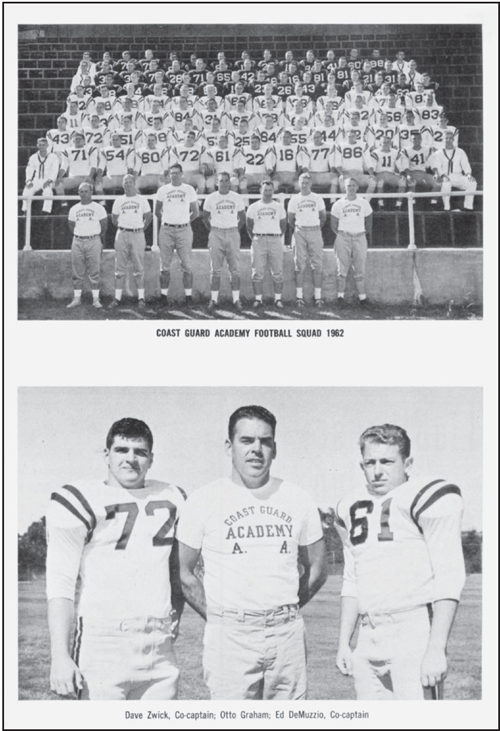
THE 1962 FOOTBALL TEAM. The 1962 team and coaches are pictured at the top of this image, with the bottom of the image featuring coach Otto Graham and cocaptains Dave Zwick (left) and Eddie DeMuzzio (right). This was Graham’s third year as the academy’s head football coach. In 1962, the team had five wins, two losses, and one tie. The next year, the team went undefeated. (1963 Tide Rips.)
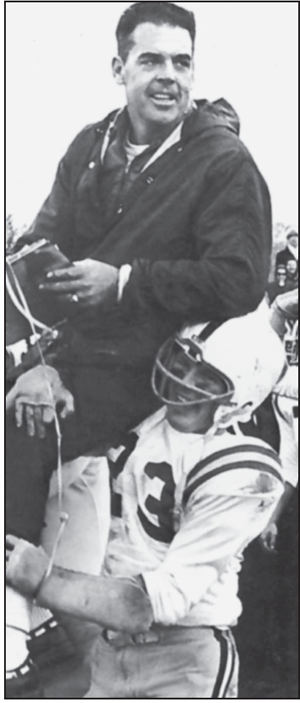
A PERFECT SEASON. Coach Otto Graham is carried off the field following the last regular-season game in 1963. That year’s team had a perfect record of 8–0. They held their opponents to only 42 total points for the season—an all-time academy record. (1964 Tide Rips.)
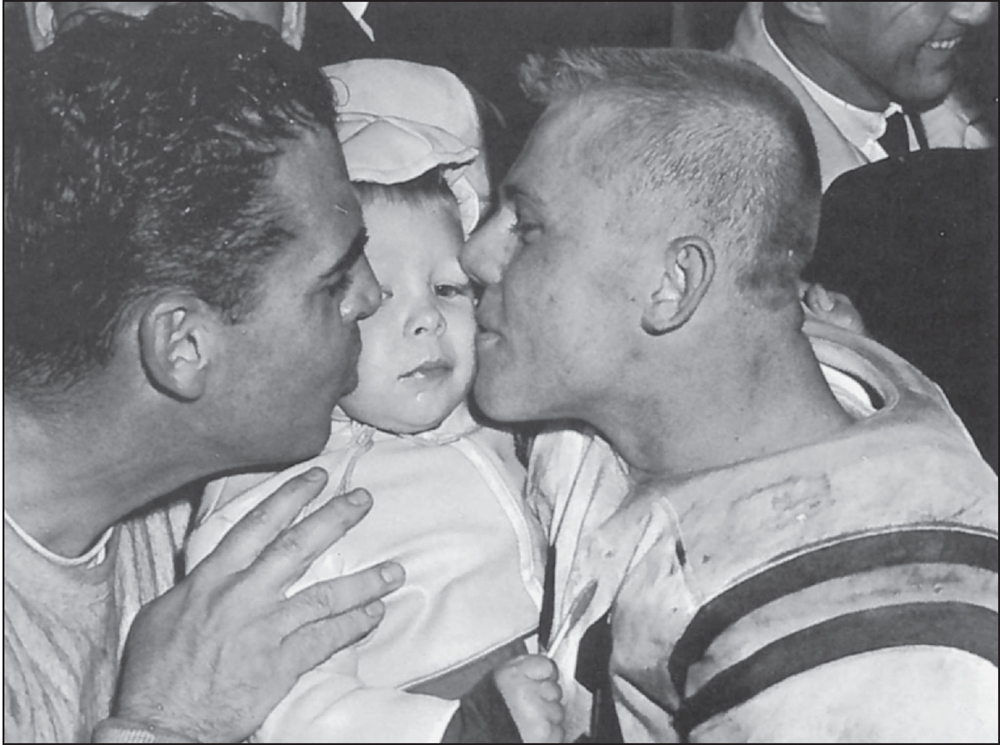
THE GOOD LUCK BABY. Coach Otto Graham (left) and cocaptain Bill Thompson kiss a baby following their perfect season in 1963. The child was the son of Capt. Joe Smith (class of 1956) and had attended nearly every game with his parents. The team considered him a good luck charm. (1964 Tide Rips.)
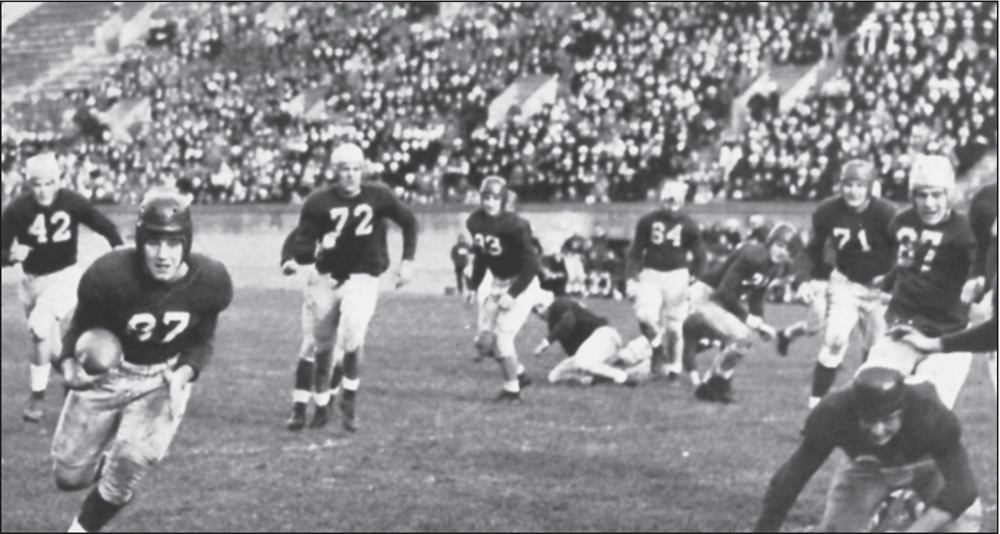
BIG GAIN AT JONES FIELD IN 1933. The original natural turf had a tendency to turn into a mud bowl during the rainy season. Note the leather helmets and lack of face guards. (1934 Tide Rips.)
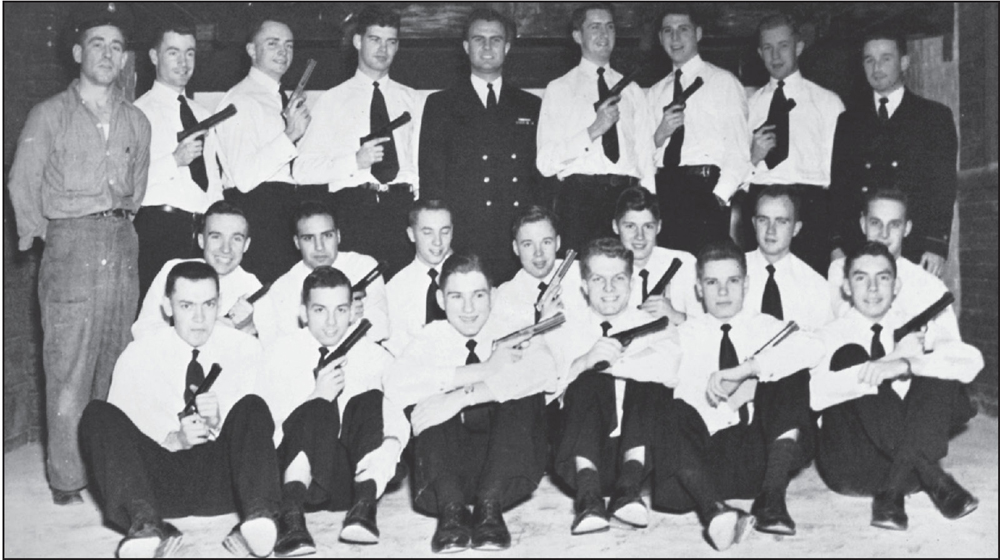
THE 1954 PISTOL TEAM. While football gets a lot of attention, historically, the academy rifle and pistol teams are much more competitive on the national level. The teams practice in a modern indoor range in the basement of Chase Hall. The academy is a founding member of the New England Intercollegiate Rifle League, which held its first competition in New London in 1939. The academy’s rifle team won the Mid-Atlantic Rifle Conference in 2019. (1954 Tide Rips.)
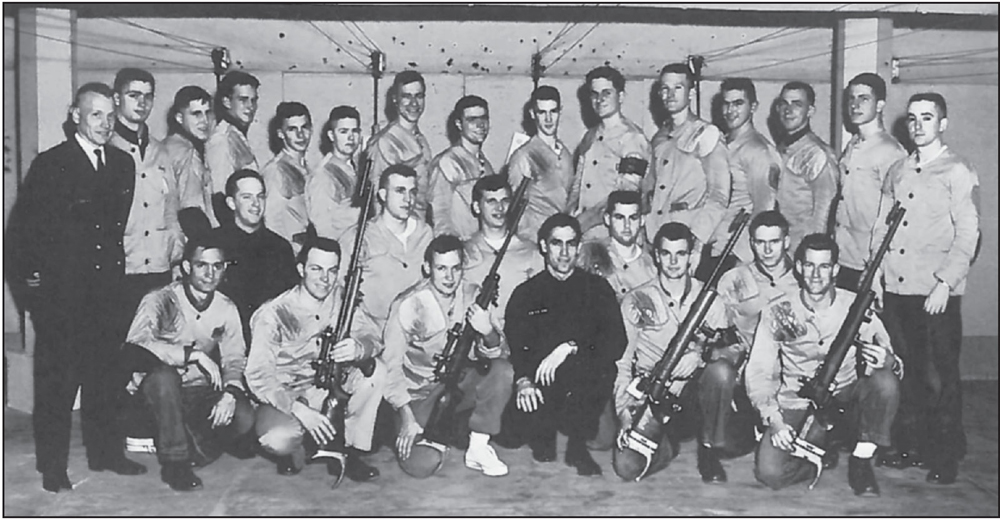
THE 1964 RIFLE TEAM. The first rifle team was formed at the academy in 1932. Mike Stenger (class of 1964), at farthest right in the first row, fired 200 out of a possible 200 in the Mohegan Rifle League Match in 1964. This was the first time that was ever accomplished by a cadet and only the second time it was ever done in competition. Stenger was an NRA master and went on to make captain, became an aviator, and commanded two air stations. (1964 Tide Rips.)
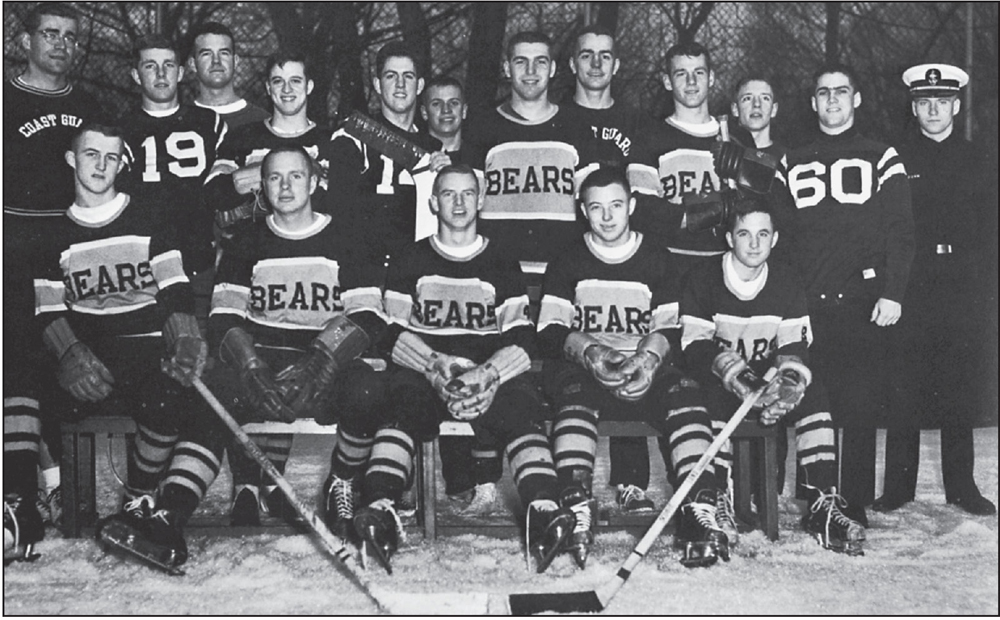
THE 1963 ICE HOCKEY TEAM. The Bears finished 2019 as the 11th-ranked team in the Atlantic Region in the regular season. US Coast Guard hockey has a long history that dates back to before World War II. At the academy, hockey is a club sport supported by the alumni association. In addition to the team’s competitive Atlantic Coast Hockey Association league, active-duty and reserve members continue to play for years after graduating from the academy. The Coast Guard Hockey Organization helps promote league play, national armed forces and first responder tournaments, and the annual in-house Coast Guard Commandant’s Cup ice hockey tournament in Cape Cod, Massachusetts. Playing hockey at the academy is the start of building skills and lifelong friendships within the Coast Guard hockey community. (1963 Tide Rips.)
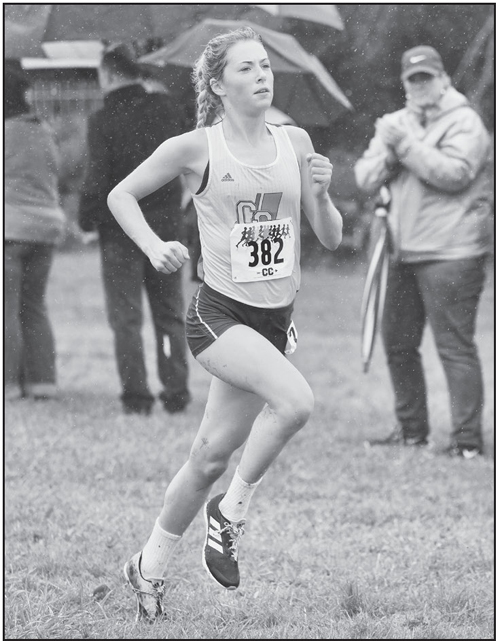
KAITLYN MOONEY (CLASS OF 2021). Truly a running sensation, Mooney, nicknamed “Moon Man,” was an All-American 2018 NEWMAC cross-country champion and Rookie of the Year in her fourth-class year. She ran the fastest time ever recorded for 5,000 meters in the Open New England Championship. She placed fourth at the national championship. (Courtesy of Paul Duddy.)
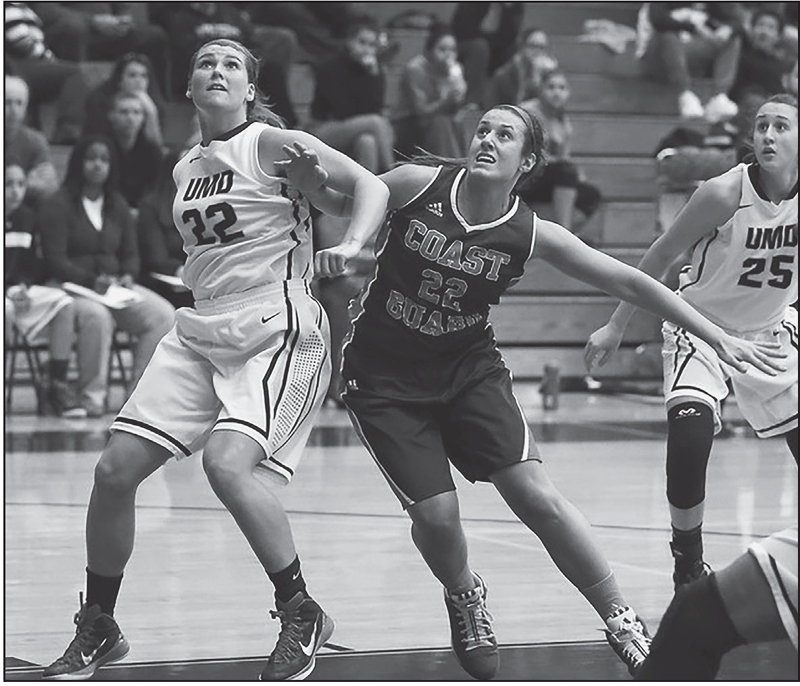
WOMEN’S BASKETBALL, 2018. Women’s basketball consisted of 13 hardworking women on the team that had a record of 7 wins against 18 losses in 2018. Alex Ivansheck became the head coach of the academy team in 2012. She led the team to back-to-back 19-win seasons in 2013–2014 and 2014–2015. (Courtesy of the US Coast Guard Academy; Public Affairs.)
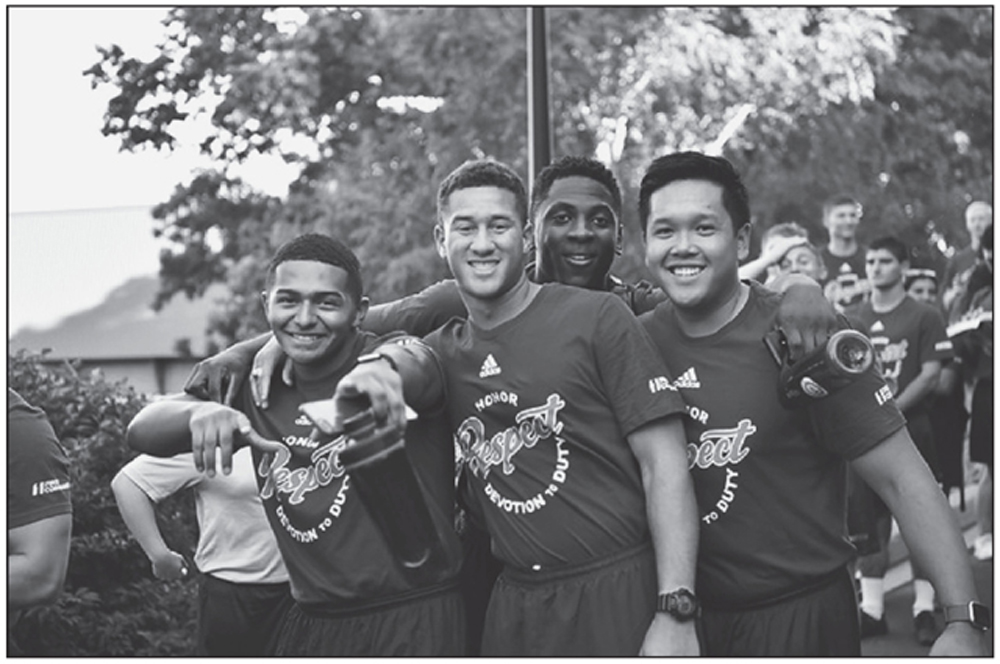
PEP RALLY, AUGUST 29, 2019. The T-shirts say “Respect, Honor, and Devotion to Duty.” The swab bible, The Running Light, teaches that the answer to “What is respect?” is “valuing and appreciating the lives and sacrifices of others. The fundamental mission of the Coast Guard is saving lives and by having respect for the lives of all people, the leaders of our organization are able to accomplish our core mission.” (Courtesy of Paul Duddy.)
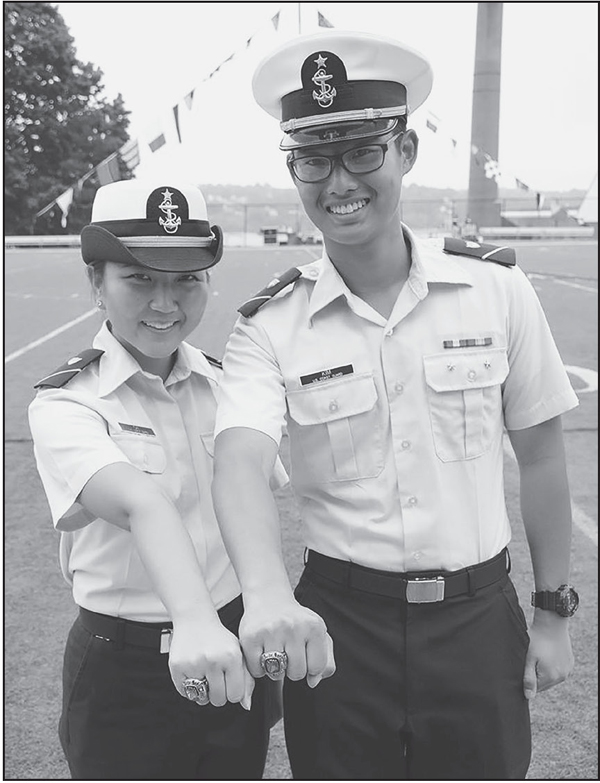
HELEN OH AND BRIAN KIM (CLASS OF 2019). The two shooters display their national championship rings for pistol. The 2019 US Coast Guard Academy pistol team won the NRA Collegiate Pistol National Championship and had a 12–1 match record. This picture was taken in both cadets’ third-class year. Both of them graduated in 2019 with over 20 national titles between them. (Courtesy of Paul Duddy.)
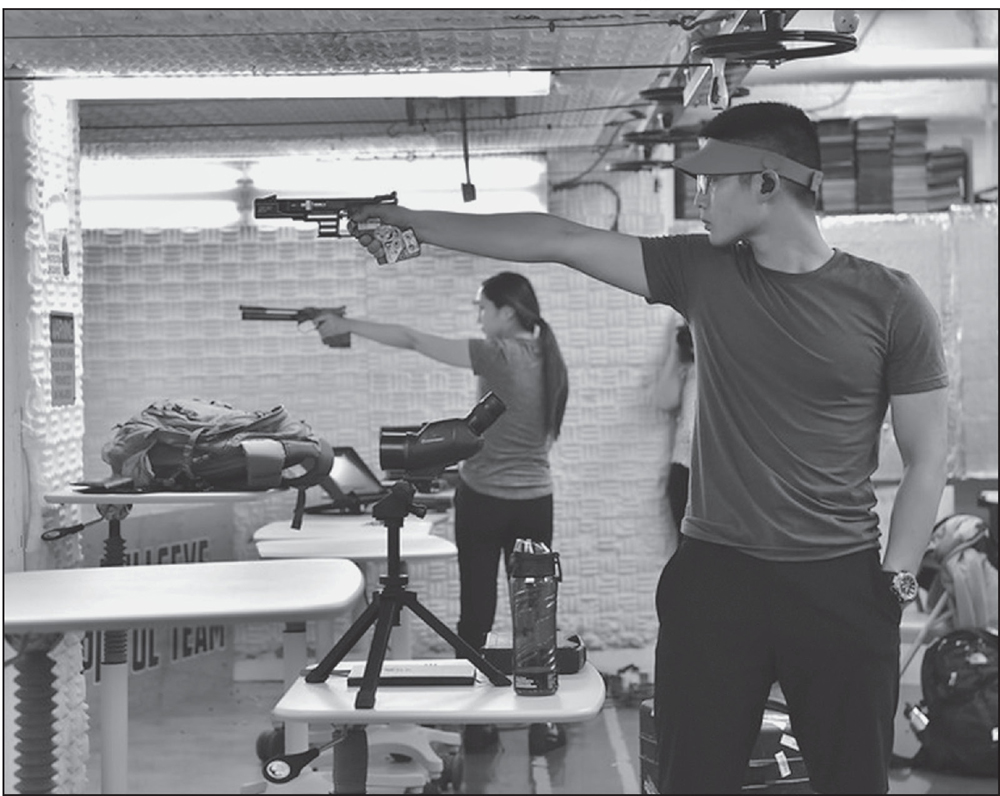
PRACTICING FOR THE OLYMPICS. Brian Kim and Helen Oh have kept up their practicing even after graduation. They are assigned to the academy and practice their shooting each day; they are hoping to make the next Olympic team. (Courtesy of Paul Duddy.)
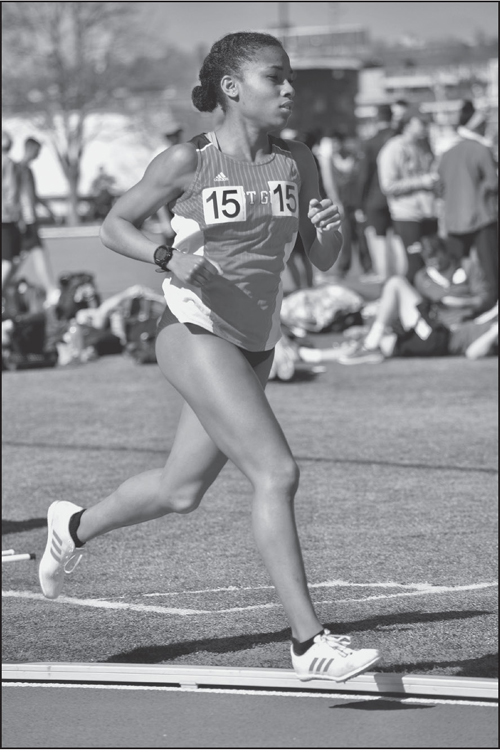
ALL-AMERICAN ANITA GREEN (CLASS OF 2019). Green was the regimental commander, the top cadet of the academy. She was part of the 4/800 women’s relay team that set the all-time academy record and was fourth all-time for Division III. Cadet First Class Green was the cocaptain of the women’s cross-country team. In the 2019 Tide Rips, she wrote that she and her cocaptain Nina Ragle had been blessed with the love that the team shared with each other. (Courtesy of Paul Duddy.)
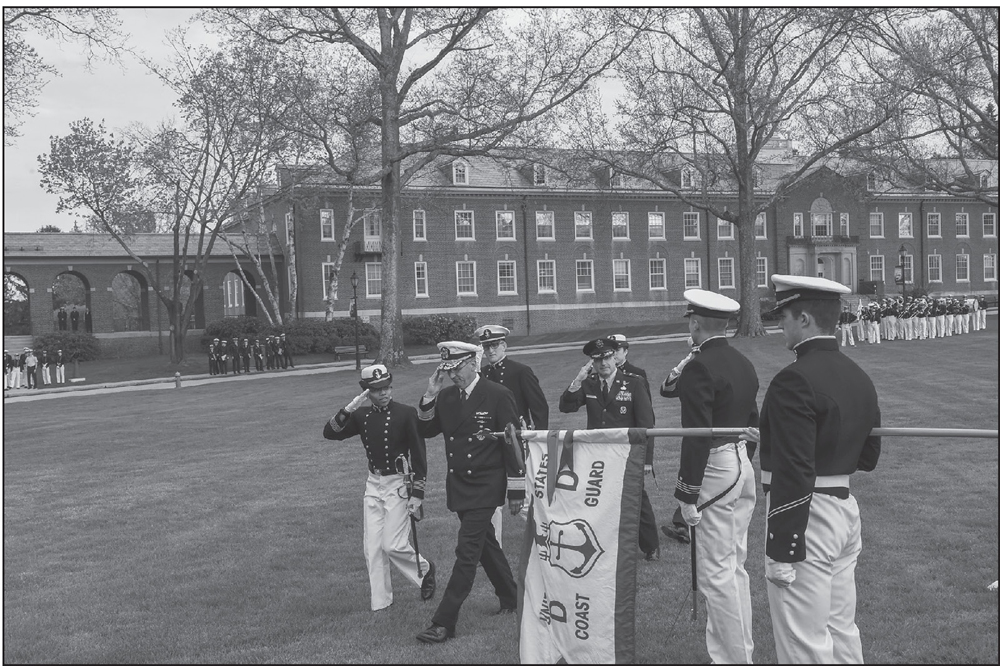
REGIMENTAL COMMANDER ANITA GREEN. Below, Green is pictured escorting visiting dignitaries during an academy review. She was the second African American female regimental commander. Her major was mechanical engineering. She is from Clermont, Florida, and after graduating in 2019, she was assigned to the cutter Decisive in Pensacola, Florida. (Courtesy of US Coast Guard Academy Public Affairs.)
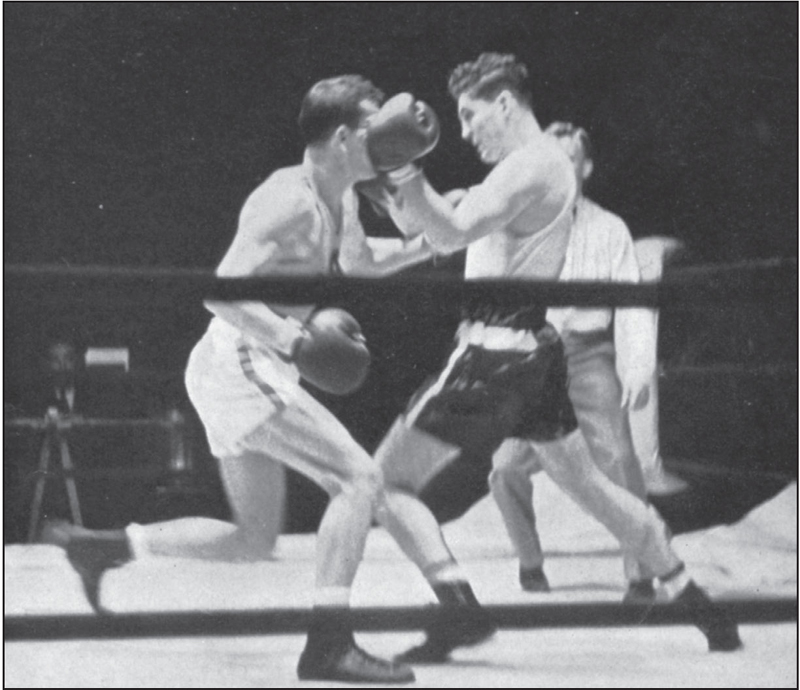
BOXING AT THE ACADEMY. This was one of the five sports played at Fort Trumbull. Boxing has been an off-and-on team sport at the academy. As of this writing, in summer 2020, the boxing ring on the third deck of the Alumni Center has been dismantled for lack of a coach and safety concerns of the senior administration. (1932 Tide Rips.)
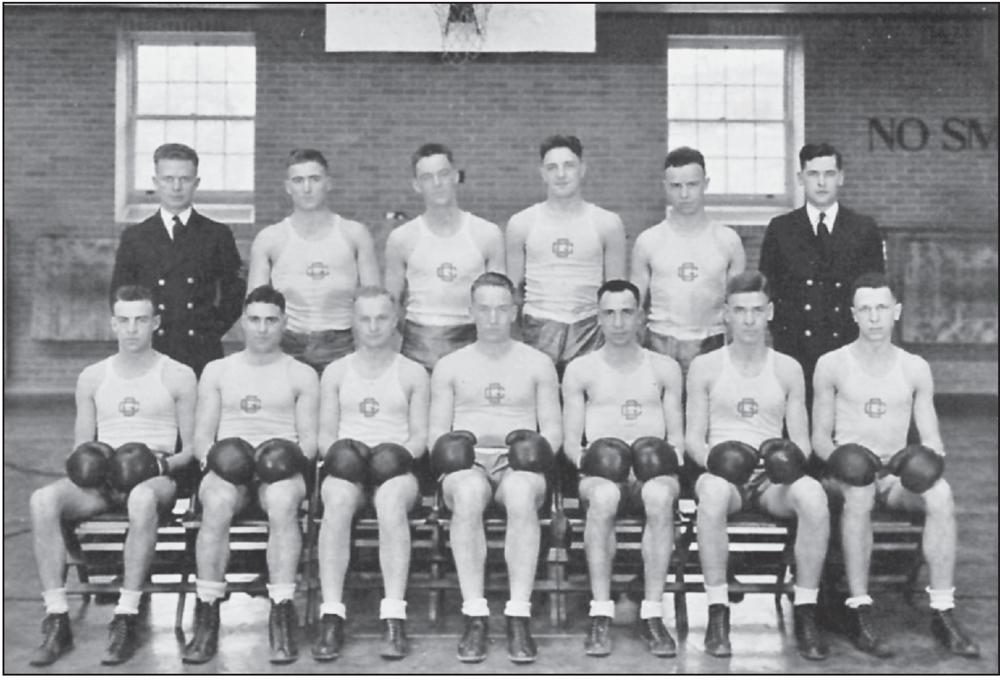
BOXING TEAM, 1934. The recent academy teams, with a volunteer coach and boxing being just a club, still had five collegiate national champions, 30 All-Americans, four Golden Glove champs, and two Olympic team trial qualifiers. The team placed as high as third in the country. (1934 Tide Rips.)
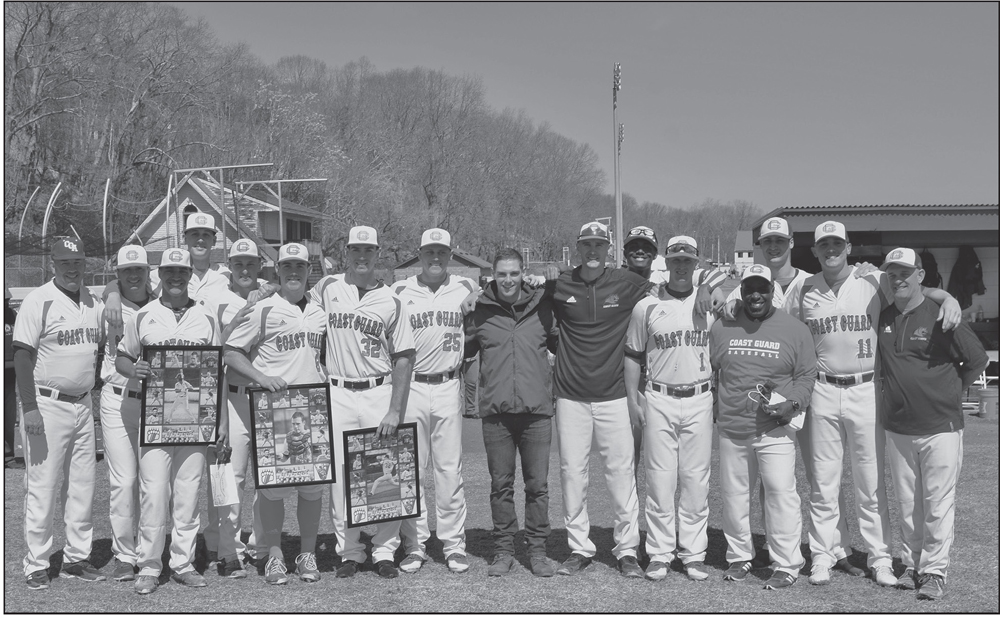
2019 ACADEMY BASEBALL TEAM. Six members of the team were selected for the NEWMAC All-Star Team. The seniors in this photograph are holding pictures summarizing their careers. (Courtesy of Paul Dudley.)
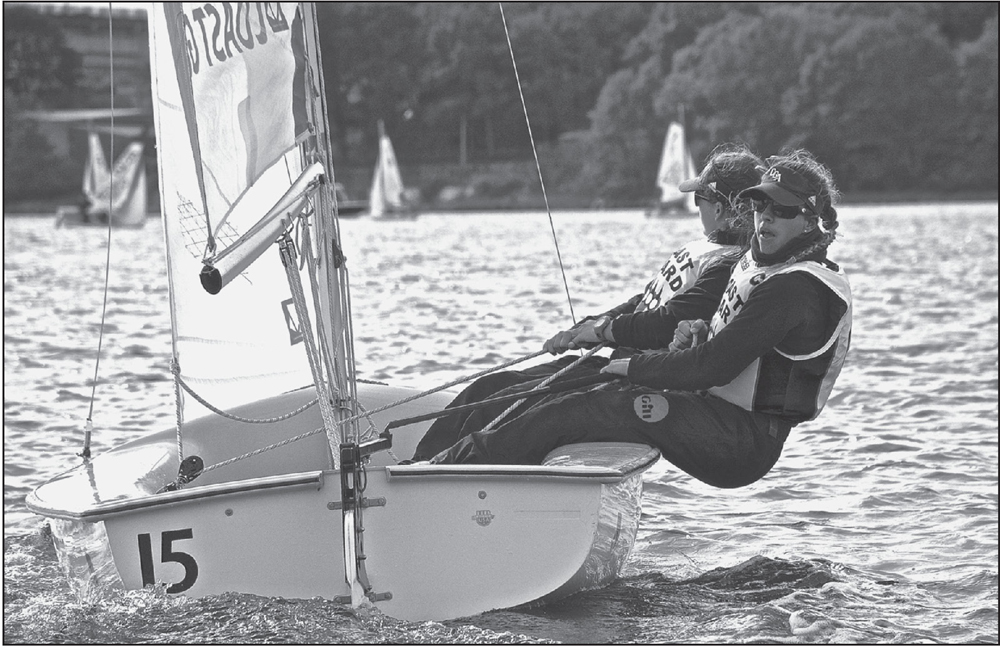
OLYMPIC HOPEFULS. Lt. (jg) Nikole Barnes (class of 2017), who is at the tiller, finished as the highest-ranked team in the 2018 World Sailing Championship in Aarhus, Denmark. While at the academy, Barnes was named the Women Sailor of the Year for College Sailing for 2015–2016 and All-American for both women’s and coed sailing during her sophomore and junior years, with an honorable mention in her freshman year. She was named Female Rookie of the Year and was recognized as the College Women’s Sailor of the Year in 2016. (Courtesy of Paul Duddy.)

NIKOLE BARNES (CLASS OF 2017). Barnes (center) is pictured with Rear Adm. Rudy Peschel, US Coast Guard (retired), and the author (left) at an alumni association appreciation dinner. These dinners are important to recognize those partners who are making a significant contribution to the academy. Typically, they are held in conjunction with an alumni board of directors meeting. Outstanding cadet leaders and athletes, like Barnes, are also invited. (Author’s collection.)
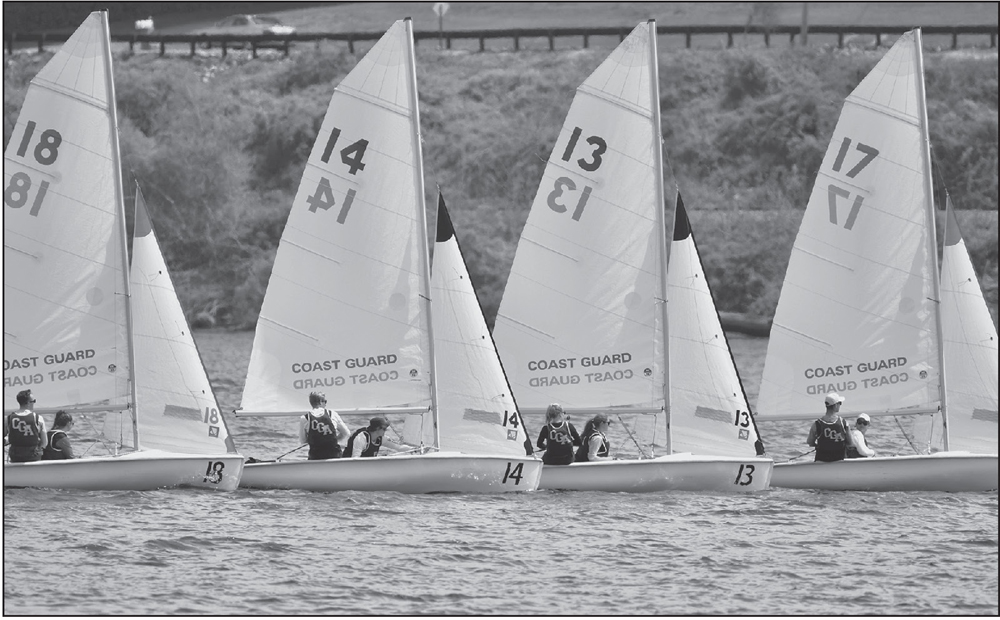
DINGHY SAILING COMPETITION ON THE THAMES RIVER. The dinghy team is one of the most competitive teams at the academy, with a winning tradition in some of the toughest regattas in the country. Many academy sailors have been named All-Americans, and the Coast Guard Academy Alumni Bowl is awarded every spring to the winning team at the New England Dinghy Championship. (Courtesy of Paul Duddy.)
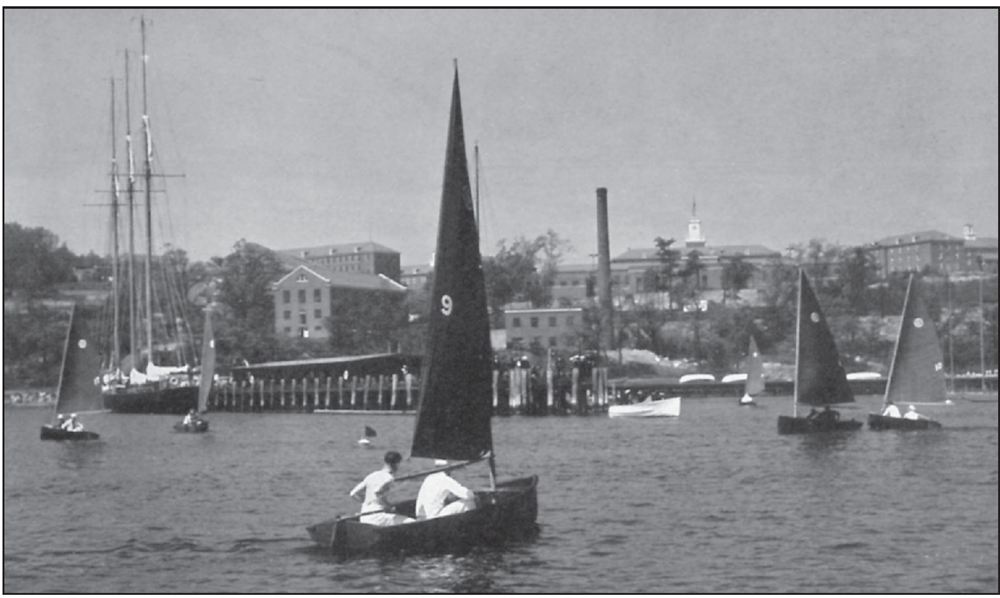
DINGHY SAILING IN THE 1940S. Note the absence of the academy’s current buildings, such as Roland Hall. The Thames River is shared with the submarines that are based upriver in Groton. Once, a cadet, while sailing, made a surfaced submarine back down under strict rules of the road that give sail the right of way over power. The cadet was subsequently given a class-one offense for embarrassing the Navy. (1943 Tide Rips.)
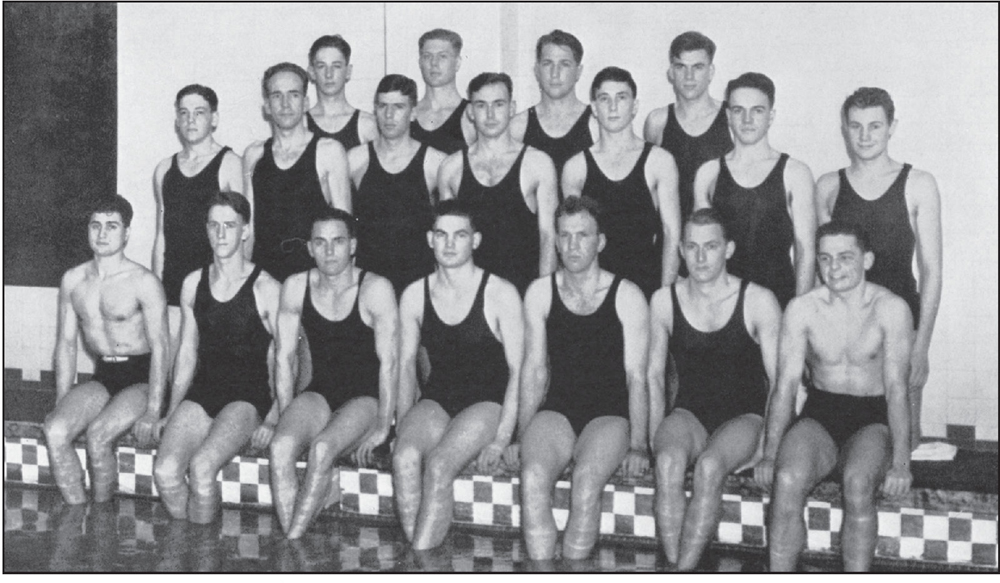
ACADEMY SWIM TEAM, 1940. Swimming is a mandatory sport at the academy. Sailors must be able to swim, and swimming is at the core of the physical education curriculum. (1940 Tide Rips.)
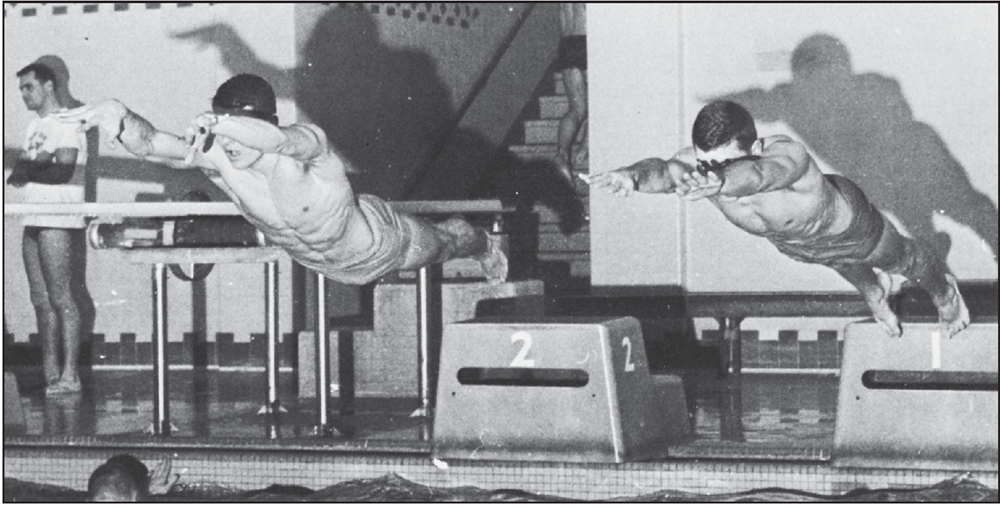
SWIM TEAM COMPETITION. Both men and women compete at NEWMAC meets. Both teams routinely have All-American and All-Conference swimmers. (1966 Tide Rips.)
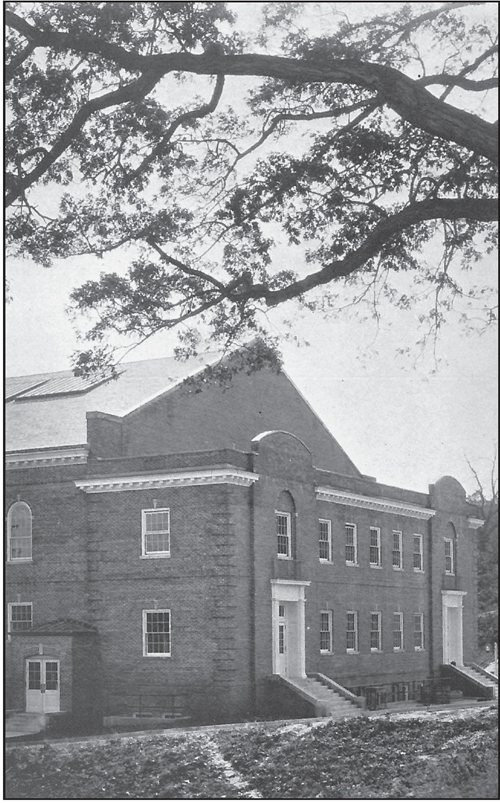
BILLARD HALL. This building was named for Commandant Frederick C. Billard, who was instrumental in authorizing $1.75 million in Congress for the secretary of the treasury to start the process that resulted in the academy’s move from Fort Trumbull to its present location. For years, Billard Hall was the center for academy sports. It now contains the Otto Graham Center for Athletic Excellence. (1940 Tide Rips.)
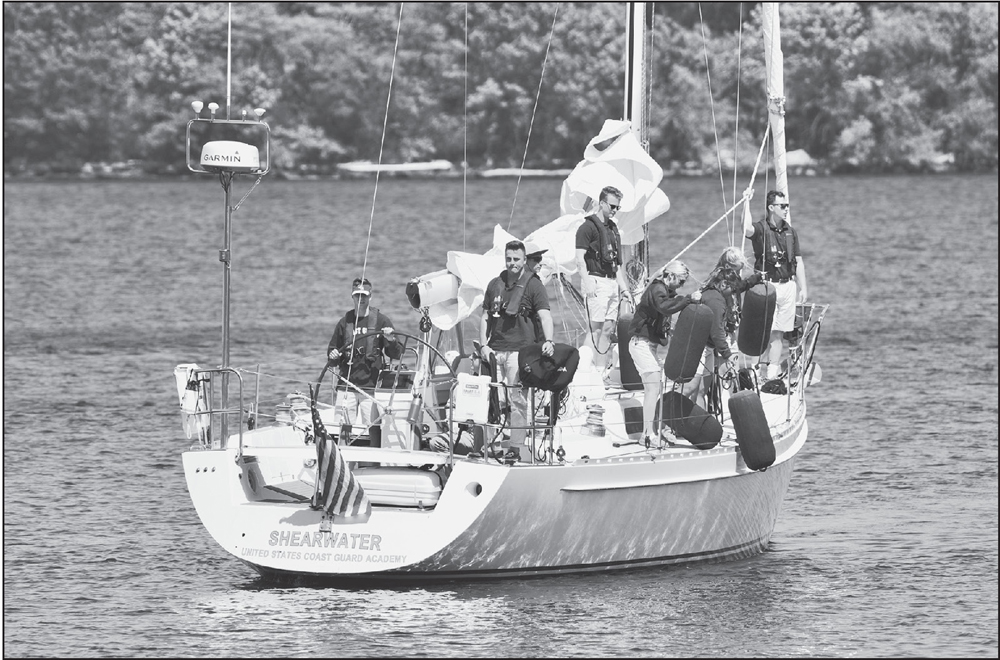
SAILING ON THE THAMES. This is one of the eight beautiful Leadership 44 yachts that received funding from the alumni association in 2013. These yachts enable the entire second-class year to experience coastal sailing in an intimate team-building setting. The Coastal Sail Training Program is one of the most popular programs at the academy. (Courtesy of Paul Duddy.)
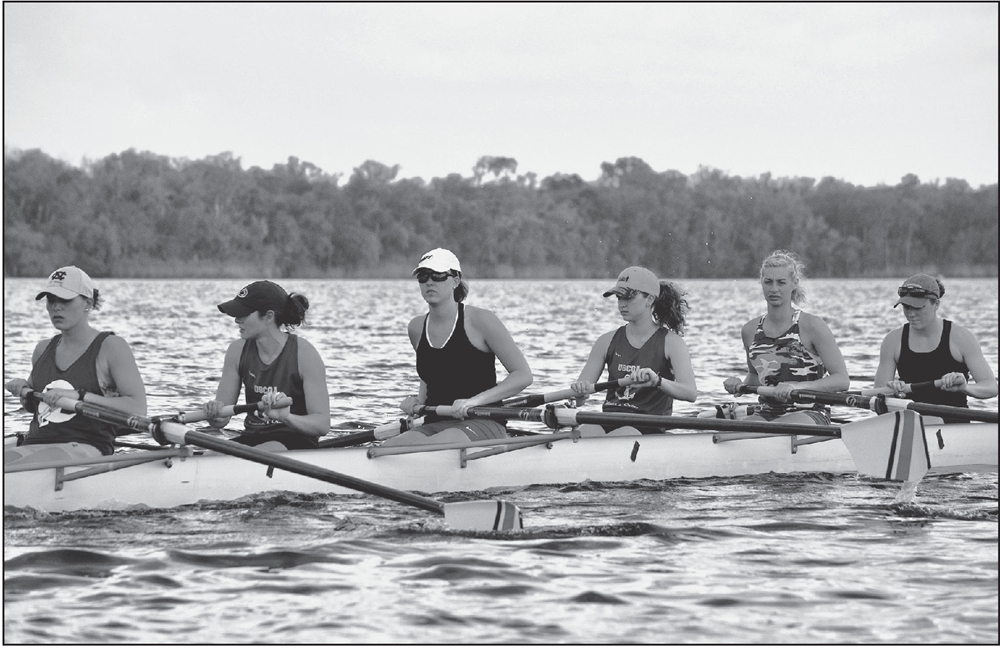
WOMAN’S EIGHT-PERSON SHELL. The rowing center supporting this program was dedicated in 1982, as was the Seamanship Sailing Center in 1984. The Coast Guard Academy Alumni Association and the Coast Guard Foundation jointly funded both projects. (Courtesy of Paul Duddy.)
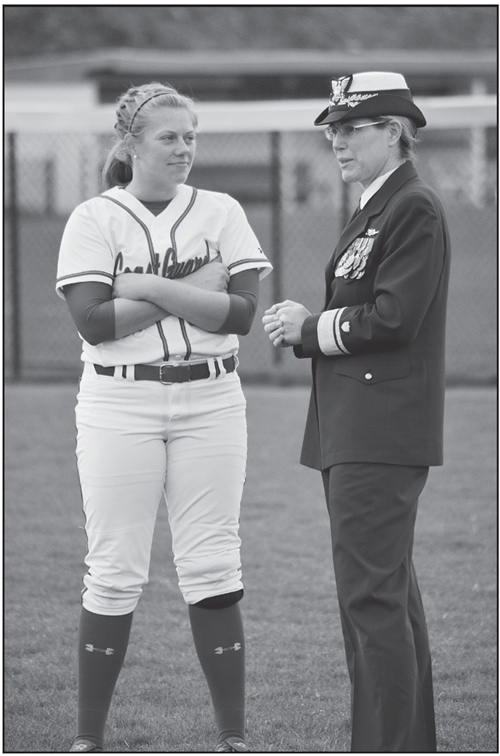
WOMEN’S SOFTBALL. Cadet Hayley Feindel (left; class of 2012) talks with the superintendent, Rear Adm. Sandra Stosz (1982), the first female academy graduate to be selected for flag rank. Admiral Stosz was herself a champion athlete, having won the Maryland State Female Discus Championship in 1977 when she was a student at Mount Hebron High School. Feindel was an All-American softball pitcher. Over the course of her four years at the academy, she led the women’s softball team to four straight NCAA tournament playoff berths. She also led the team to three NEWMAC titles (in 2010, 2011, and 2012) and was NEWMAC Pitcher of the Year three times. Her most impressive feats as an athlete at the academy included 17 individual school records and the NCAA Division 3 record for all-time strikeouts (1,457). Among those school records are her single-season ERA (0.56) and complete games (140). (Courtesy of Paul Duddy.)
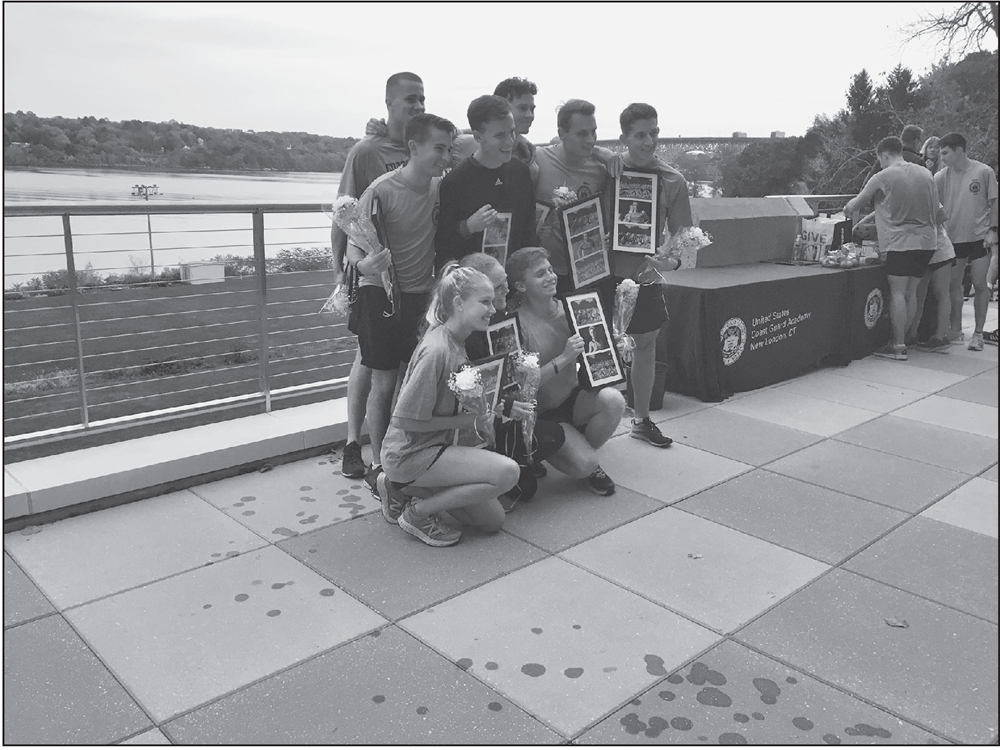
CROSS-COUNTRY. In this picture, the 2019 team members are being recognized at a ceremony on the plaza of the Roland Center. Seniors are given pictures to commemorate their involvement with the team. (Author’s collection.)
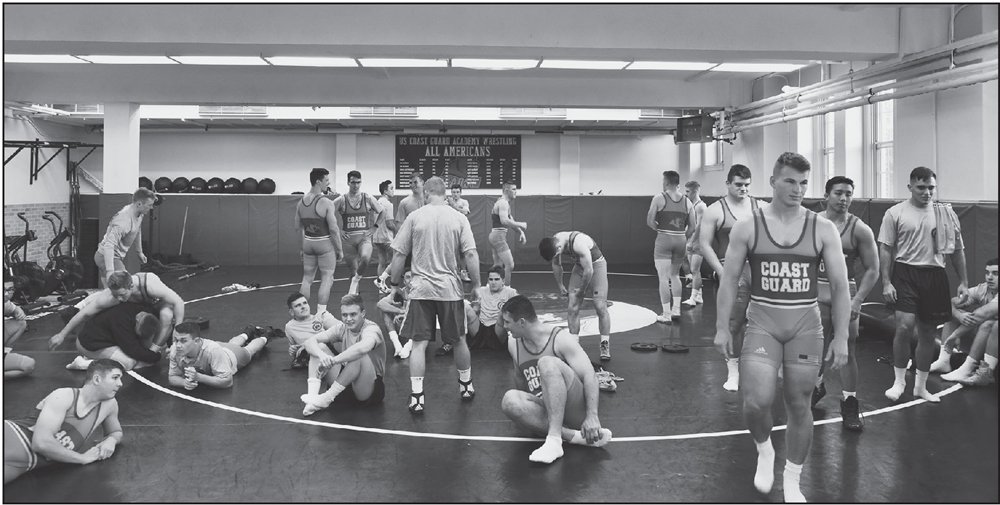
ACADEMY WRESTLING TEAM. The team had a record of 9–3 in 2018. Nick Remke (class of 2019) and Owen McClave (class of 2020) were All-Americans that year. (Courtesy of Paul Duddy.)
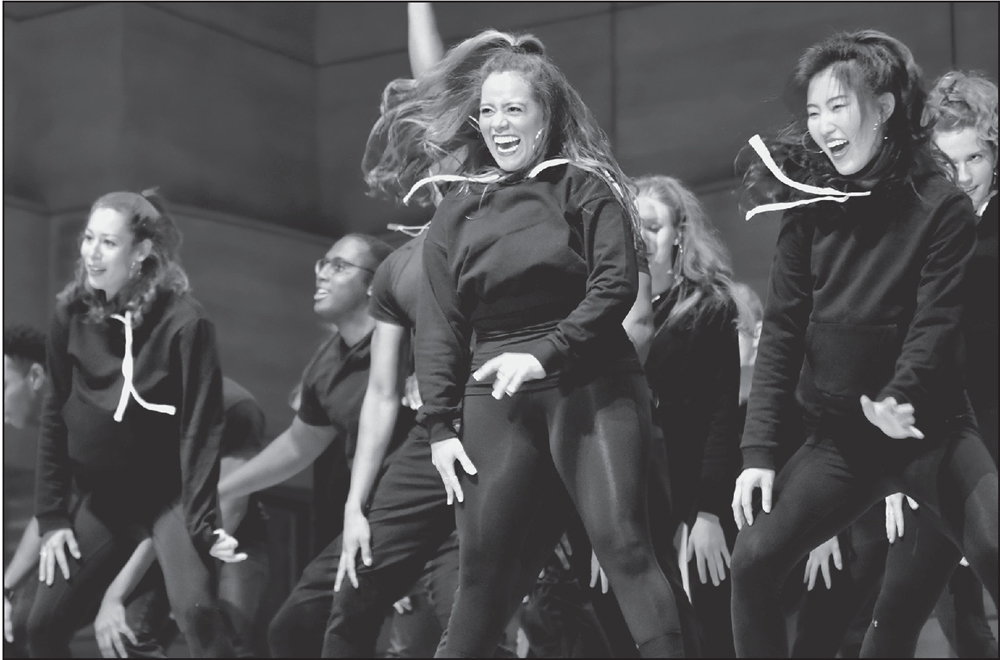
CADET MUSICAL. Music is an important aspect of cadet recreational activities. Academy bands include the concert band, pep band, regimental band, Nite-Caps, Glee Club, Fair Winds, Idlers, and Windjammers. (Courtesy of Paul Duddy.)
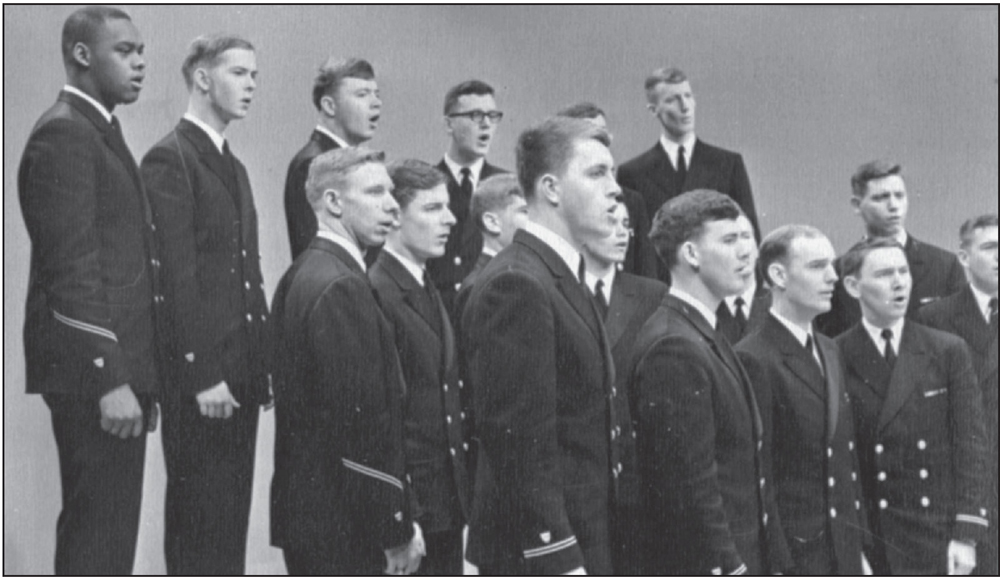
CADET IDLERS. Eight members of the class of 1959 formed this all-male a cappella singing group in 1957 on the summer cruise. The academy band director took interest and expanded the repertoire of the group. The group has performed at the White House for Pres. Dwight D. Eisenhower and his wife, Mamie; at Carnegie Hall; and on Saturday Night Live. (1969 Tide Rips.)